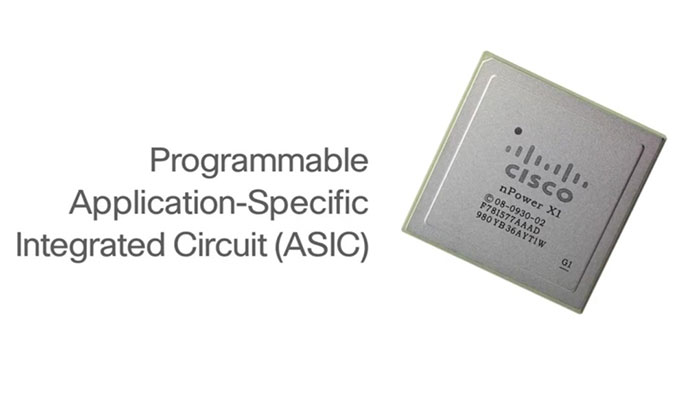6000
Home » Cisco License » Networking » Router » NCS » 6000
The licensed Cisco NCS 6000 is a high-performance routing platform that is designed for service providers and large enterprise networks. It provides advanced routing capabilities and scalability to support the increasing demands of today’s data-intensive applications and services.
Architecture and Design
The licensed Cisco NCS 6000 is built on a modular architecture that allows for high levels of scalability and flexibility. It consists of three main components: the chassis, the line cards, and the fabric.
The chassis provides the physical infrastructure for the NCS 6000 and houses the line cards and fabric. It is available in two different sizes, the 16-slot chassis and the 8-slot chassis. The 16-slot chassis supports up to 24 line cards, while the 8-slot chassis supports up to 12 line cards.
The line cards provide the processing power and interfaces for the NCS 6000. They are available in various configurations to support different types of interfaces and protocols, such as Ethernet, SONET/SDH, MPLS, and IP. The line cards can be hot-swappable, which means they can be added or removed without disrupting the operation of the router.
The fabric provides the high-speed interconnectivity between the line cards and the switching fabric. It uses Cisco’s proprietary nPower technology, which provides up to 5.76 Tbps of switching capacity per chassis. The fabric is also designed for high availability, with redundant fabric cards and links.
Routing Capabilities
The licensed Cisco NCS 6000 provides advanced routing capabilities to support the complex routing requirements of modern networks. It supports a wide range of routing protocols, including BGP, OSPF, ISIS, and MPLS. It also provides advanced features such as MPLS VPN, MPLS TE, and VRF-lite.
The NCS 6000 also supports segment routing, which is a new routing paradigm that simplifies network operations and enables network automation. Segment routing uses a source-based routing model, where the source node selects the path for a packet by specifying a sequence of segments. This eliminates the need for complex routing protocols and reduces network complexity.
Scalability and Resilience
The licensed Cisco NCS 6000 is designed for high levels of scalability and resilience. It can support up to 36 Tbps of switching capacity per system, making it suitable for large-scale networks with high traffic volumes.
The NCS 6000 also provides a range of resiliency features to ensure network uptime and availability. It supports hot standby routing protocol (HSRP), virtual router redundancy protocol (VRRP), and the Cisco Nonstop Forwarding (NSF) feature. These features enable fast failover and rerouting in the event of a network outage or hardware failure.
Scalability in NCS 6000
Scalability is the ability of a network to handle increasing amounts of traffic or expanding services without compromising performance. In the context of Cisco NCS 6000, scalability refers to the ability to scale up the network’s capacity to support higher data rates, larger numbers of ports, and more complex services. The NCS 6000 offers a modular architecture that enables operators to scale the network according to their specific requirements.
The NCS 6000’s scalability is achieved through its use of the Cisco nPower X1 and X2 network processors. These processors provide high performance and scalability, allowing the NCS 6000 to support up to 24 Tbps of capacity in a single chassis. This capacity can be further expanded by using multiple chassis in a single network.
The NCS 6000 also offers high-density 100G Ethernet interfaces, with up to 576 ports in a single chassis. This high density of ports allows operators to optimize their network infrastructure and reduce operational costs. Furthermore, the NCS 6000 supports a wide range of optical interfaces, including 10G, 40G, and 100G, making it a versatile solution for different network architectures.
Resiliency in Cisco NCS 6000
Resiliency is the ability of a network to recover from failures or disruptions and maintain service availability. The NCS 6000 offers a range of features that ensure high network resiliency and minimize downtime in the event of a failure.
One such feature is the NCS 6000’s use of the licensed Cisco IOS XR operating system. This operating system provides a distributed and modular architecture that enhances network resiliency by reducing the impact of failures. The IOS XR also supports in-service software upgrades, allowing operators to upgrade the network’s software without disrupting service.
The NCS 6000 also offers high availability features, such as hot-swappable components, redundant power supplies, and redundant control planes. These features ensure that the network remains operational even in the event of a hardware failure.
Another critical feature of the NCS 6000 is its support for network virtualization technologies, such as MPLS and VRF. These technologies enable operators to create virtual networks that are isolated from each other, ensuring that failures in one virtual network do not affect other virtual networks.
Conclusion
The licensed Cisco NCS 6000 is a high-performance routing platform that provides advanced routing capabilities, scalability, and resiliency. Its modular architecture and design make it flexible and adaptable to changing network requirements. The NCS 6000 is ideal for service providers and large enterprise networks that require high-speed and reliable routing.
| Product name | Product description | Product price | Discount | Product display |
|---|---|---|---|---|
| S-NC6-PAYG-150-M | NCS 6000 15x10GE Multiservice PAYG Upgrade License. | $21,719,502.00 | No | Product display |
| S-NC6-PG-200-L-B | NCS 6000 2x100GE LSR PAYG Upgrade License Spare Bundle. | $16,048,299.00 | No | Product display |



